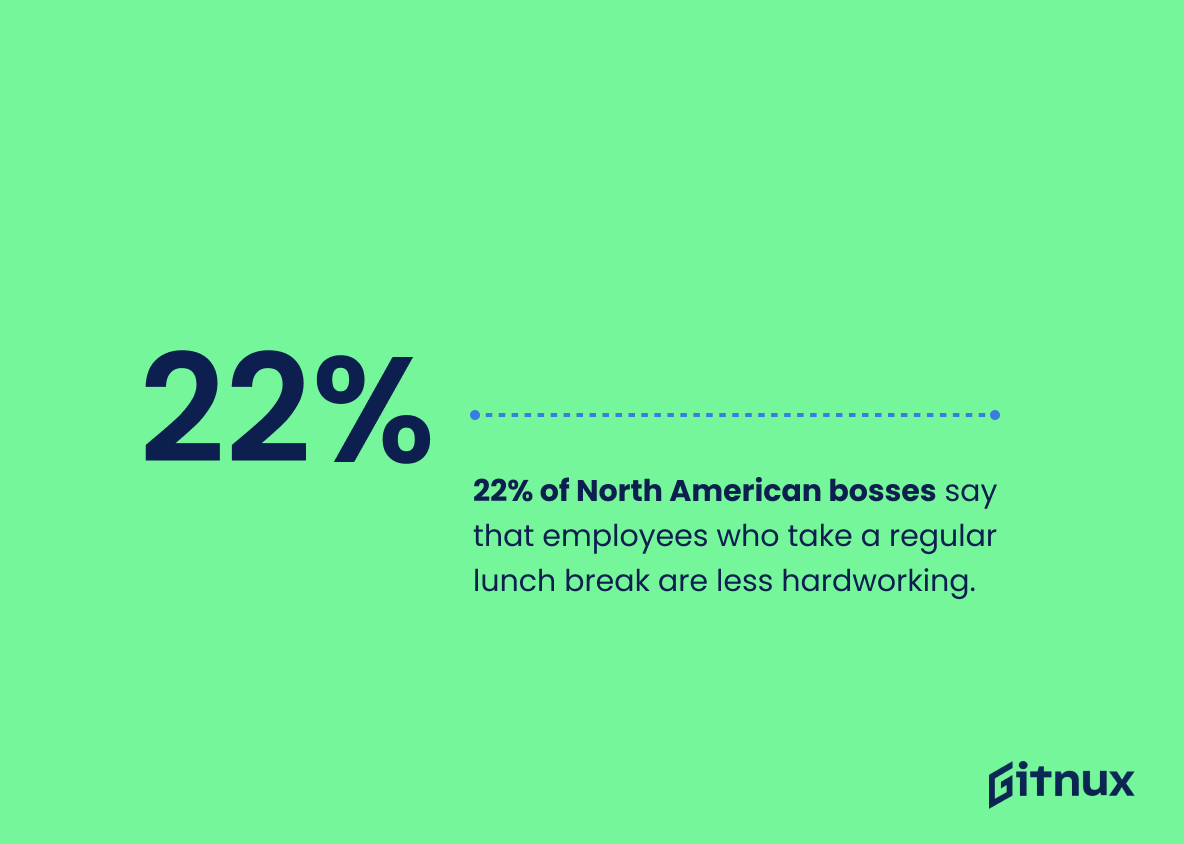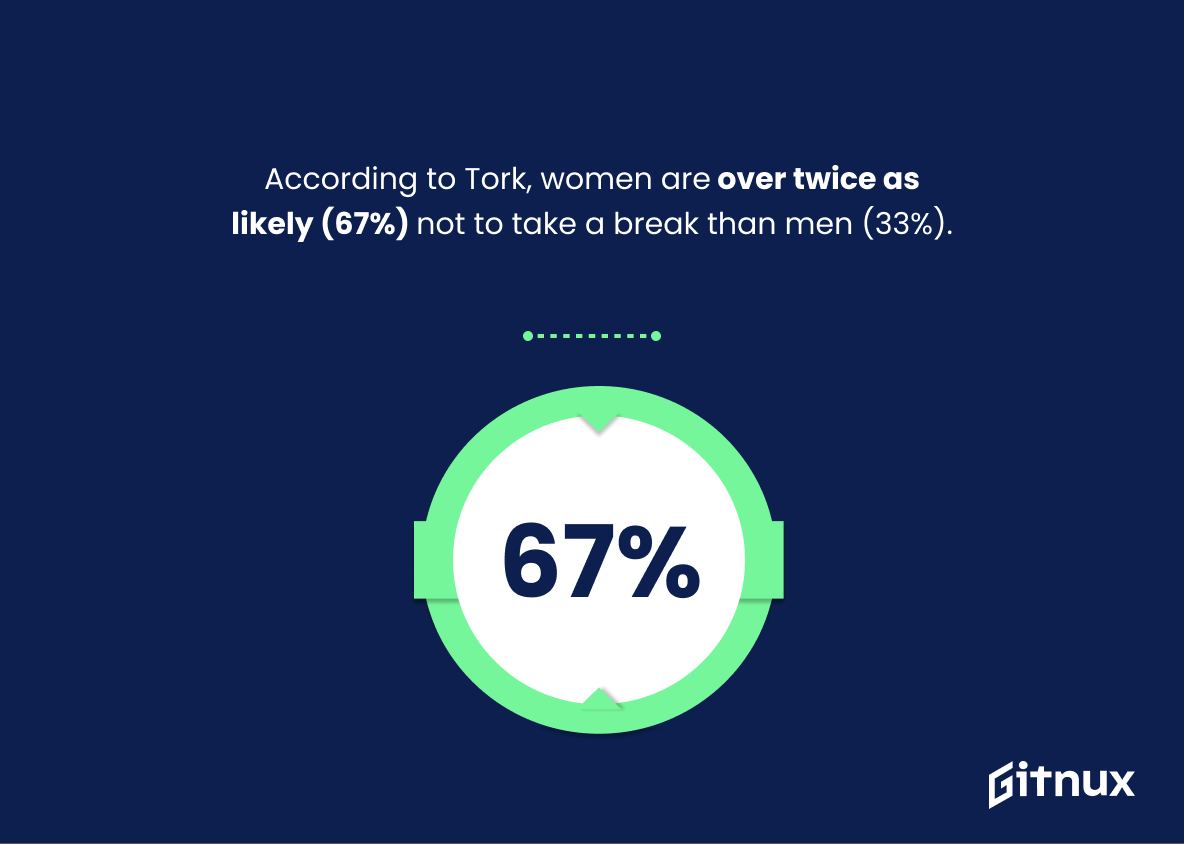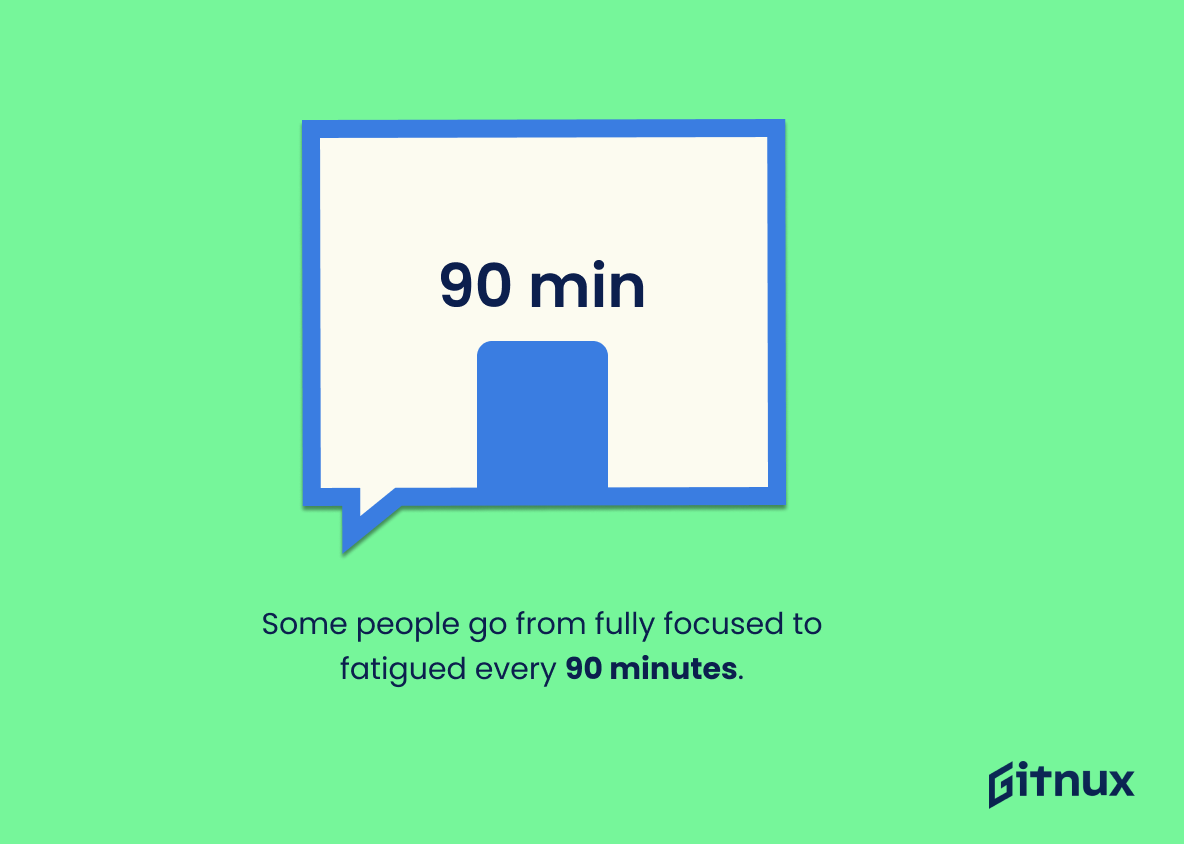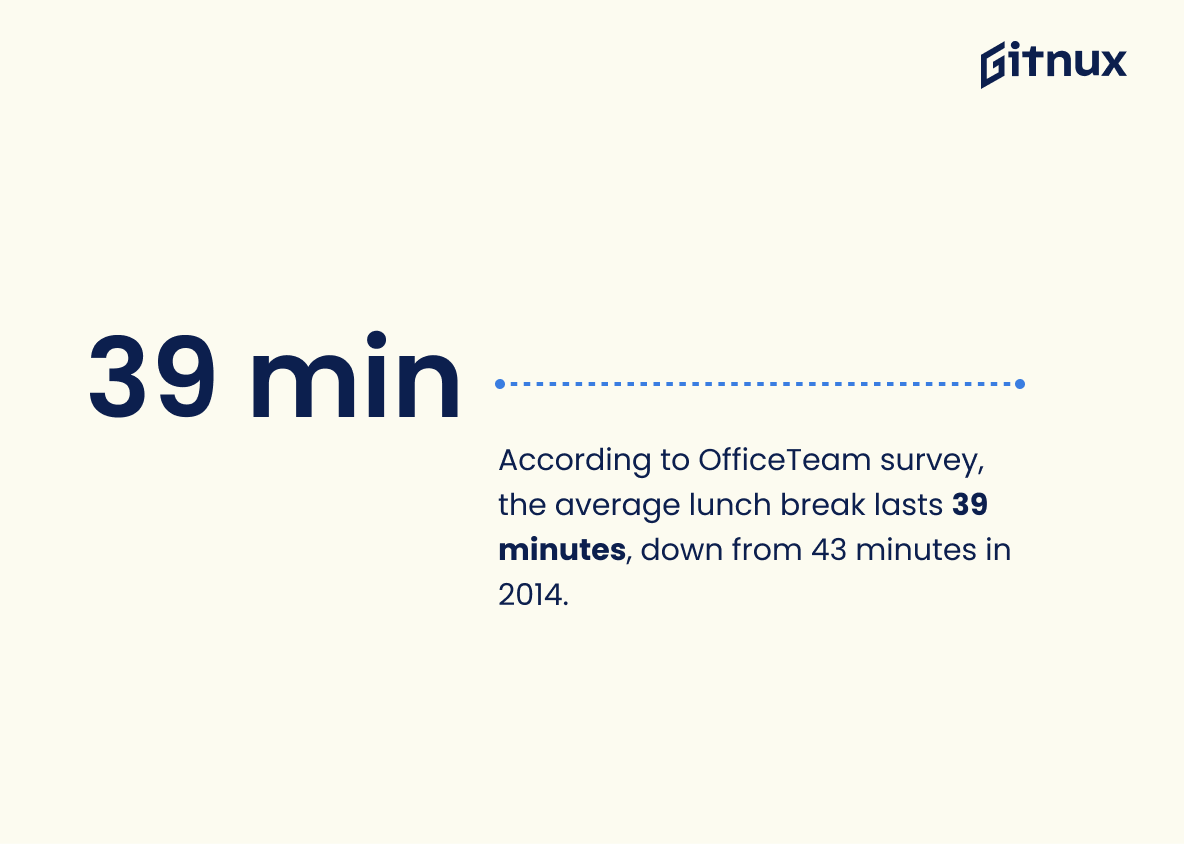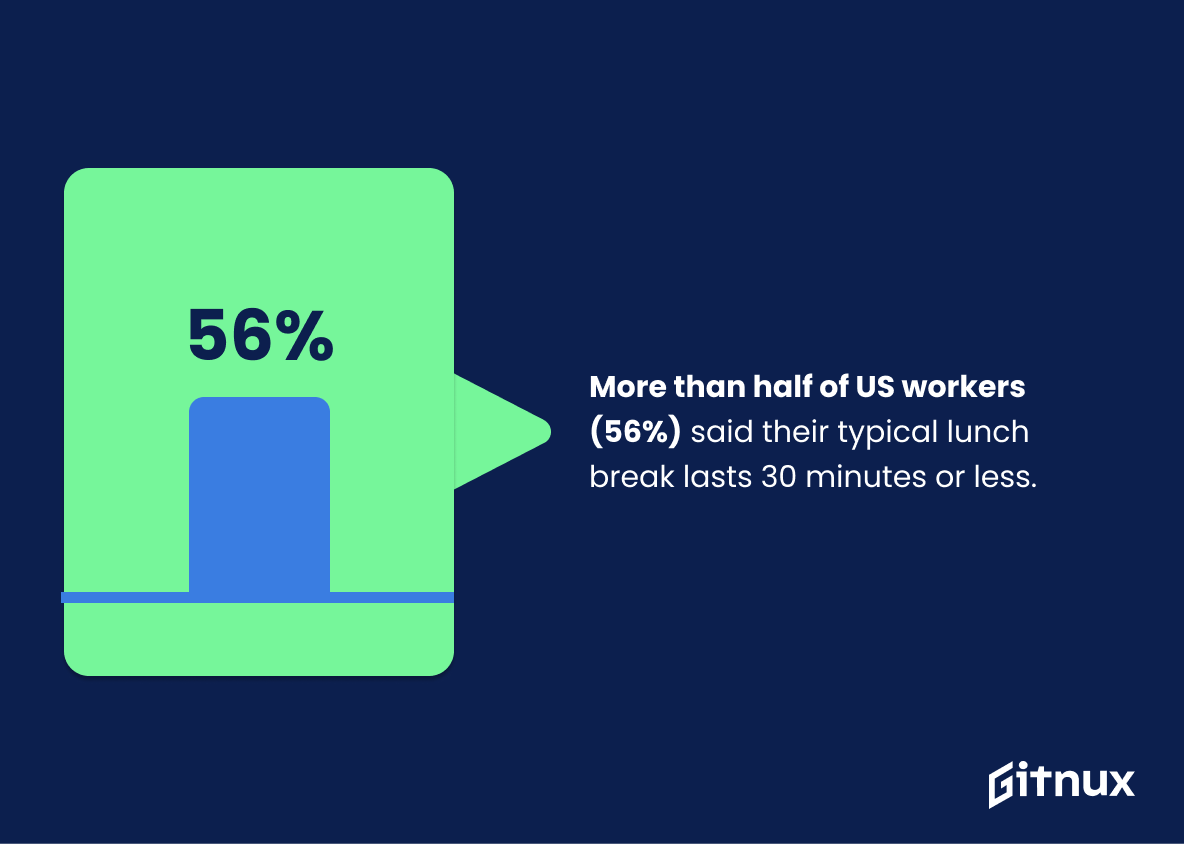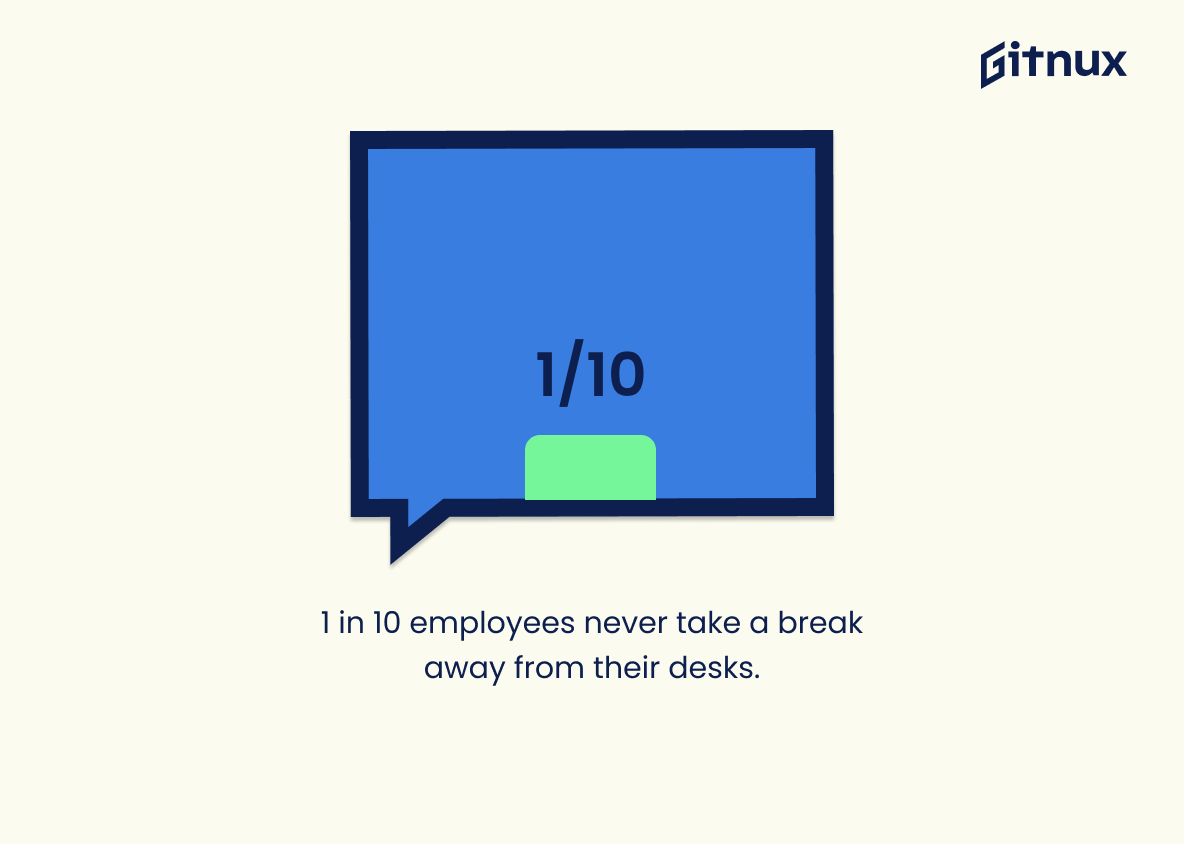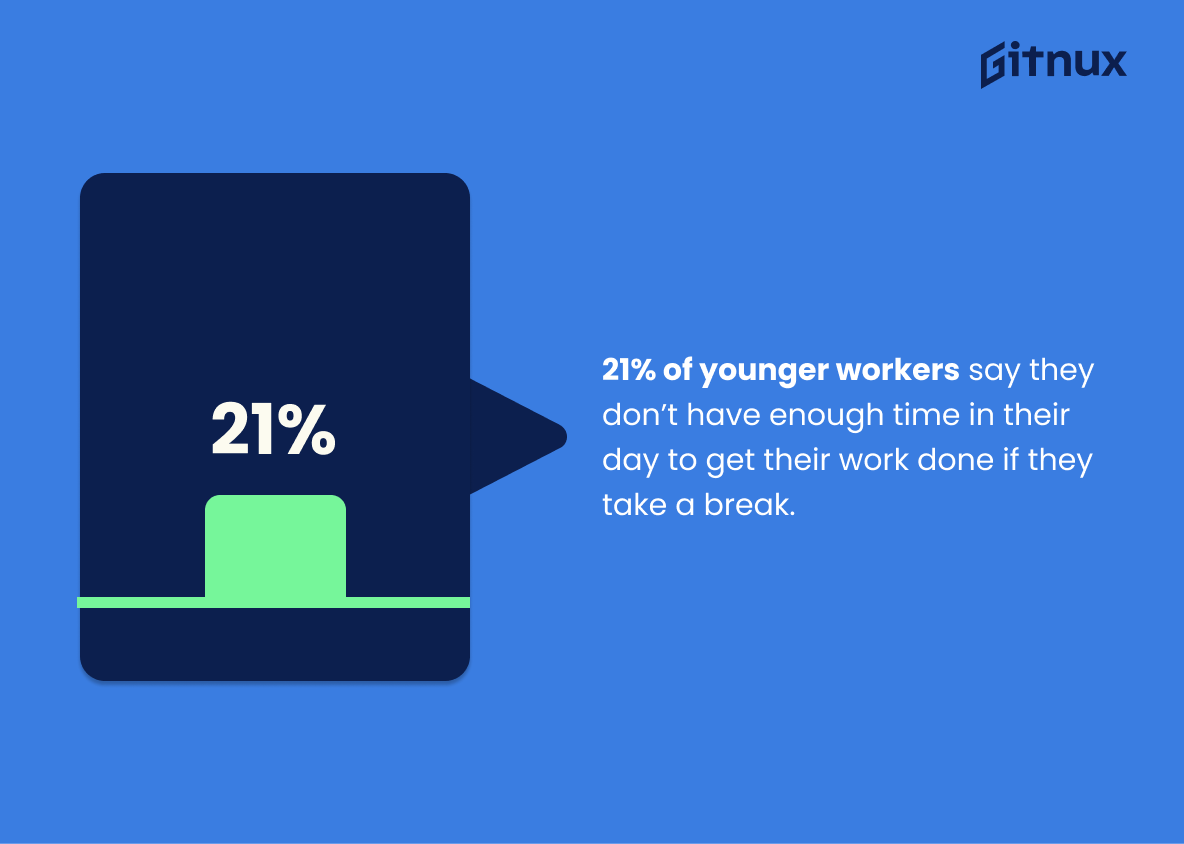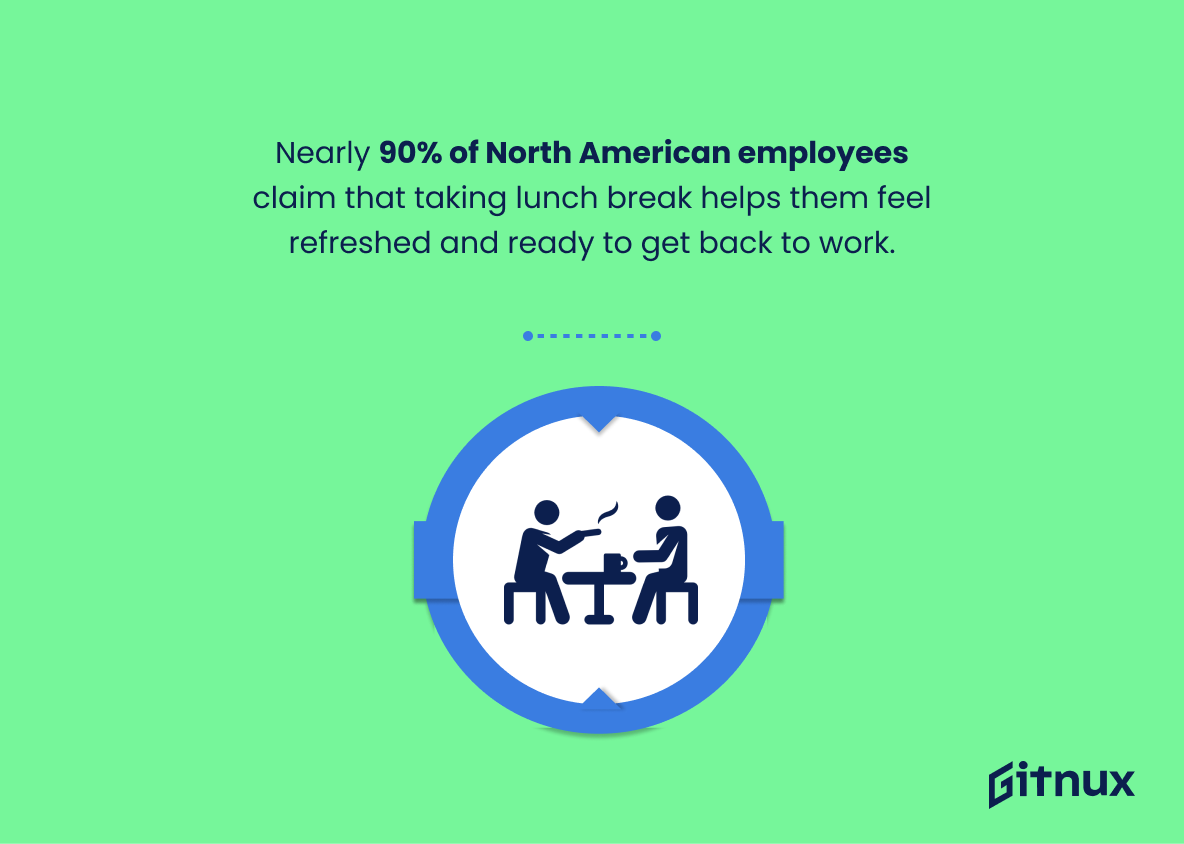Taking breaks at work is crucial for maintaining energy and productivity throughout the day. However, it can be difficult to know how often to take breaks and for how long. And this is where statistics can come in handy. By looking at the data, we can get an idea of how taking regular breaks can benefit our productivity and help us stay focused.
In this article, you will find general statistics on taking breaks at work, as well as information about different types of breaks, their lengths, and their effects. We hope it will give you an understanding of the best way to break up your workday and make sure that you are taking the right kind of breaks and making the most of your time.
Taking Breaks At Work: The Most Important Statistics
Nearly 40% of people say they only occasionally, rarely, or never take breaks during the workday. Nearly a quarter (22%) of people feel guilty or judged when they step away from work at midday.
43% of employees say more breaks at work would boost their personal happiness, 37% say regular breaks during the day would improve their health.
22% of North American bosses say that employees who take a regular lunch break are less hardworking.
General statistics on taking breaks at work
38% of survey respondents reported having meal breaks that are less than 30 minutes. 35% said they eat their meals at their desks or workstations every day. 22% said they take zero work breaks, excluding restroom and meal breaks. The same report states that employees likely have lower wellness if they have short meal breaks, eat meals at their workstations every day, or don’t take breaks at work.
According to a Tork survey, nearly 20% of North American workers worry their bosses won’t think they are hardworking if they take regular lunch breaks, while 13% worry their co-workers will judge them. 38% of employees don’t feel encouraged to take a lunch break.
22% of North American bosses say that employees who take a regular lunch break are less hardworking.
Nearly 40% of people say they only occasionally, rarely, or never take breaks during the workday. In fact, nearly a quarter (22%) of people feel guilty or judged when they step away from work at midday.
According to Tork, women are over twice as likely (67%) not to take a break than men (33%). And when women do take a break, they are more likely to spend time doing household chores (22% vs 14%).
1 in 5 employees claim guilt is the reason they don’t break away from work.
Some people go from fully focused to fatigued every 90 minutes, so taking a break every 75–90 minutes works best for them.
According to OfficeTeam survey, the average lunch break lasts 39 minutes, down from 43 minutes in 2014. 29% of employees admit to working during their lunch breaks.
More than half of US workers (56%) said their typical lunch break lasts 30 minutes or less.
The most productive workers engage in job-related tasks for 52 minutes, then take a 17-minute break. That 15-to-20-minute window is productivity’s “golden hour” (or quarter-hour, as the case may be). It’s long enough for your brain to disengage and leave you feeling refreshed, but not so long that you lose focus and derail momentum on what you were doing.
Fewer than half of employees surveyed say they take a lunch break away from their desk on an average day. 20% eat at their desks, and 13% seldom or never take time for lunch at all.
1 in 10 employees never take a break away from their desks — and 70% eat while they work at least once a week. 1 in 4 Gen Z workers are worried their employer won’t look favorably on them if they take lunch.
56% of Director-level and 51% of VPs (and above) work at their desks while eating lunch at least 3 times per week.
21% of younger workers say they don’t have enough time in their day to get their work done if they take a break. 1 in 5 say they avoid breaks, so they can finish their workday as soon as possible. 19% say there are too many meetings during the lunch hour.
Benefits of taking breaks at work
Nearly 90% of North American employees claim that taking lunch break helps them feel refreshed and ready to get back to work.
The Tork survey also revealed that employees who take a lunch break on a daily basis feel more valued by their employer. 81% of employees who take a daily lunch break have a strong desire to be an active member of their company.
94% of employees acknowledge they are happier when they’re able to take a break.
90% of employers say they encourage breaks, and 86% of respondents acknowledge taking a break would make them more productive at work.
Breaks can combat workplace burnout: 59% of employees say more breaks would improve their work happiness, and 43% say it would boost their personal happiness. Additionally, 37% say regular breaks during the day would improve their health.
Recent research shows that people are more likely to take microbreaks at work on days when they are tired. The researchers found that microbreaks help tired employees engage with their work better over the course of the day.
Read more about Employee Engagement Ideas
Just 29 minutes spent outdoors results in a 45% increase in productivity. Moreover, 63% of surveyed employees say they feel much better “in themselves” after getting some fresh air.
Employees who take breaks are more productive and creative. Breaks keep workers focused and engaged in their work, which enables them to complete their tasks more accurately with fewer errors.
78% of workers agree that taking a lunch break away from their desks improves their job performance.
What do employees do during their breaks at work?
There are four types of most frequent work breaks (excluding restroom and meal breaks). These breaks accounted for 74% of all work breaks that employees take most often: talking with coworkers about nonwork topics; checking phones for nonwork messages, updates, etc.; taking a walk outside or around the office; browsing the internet for nonwork content.
The most popular activities during breaks at work are scrolling social media (46%), reading the news (27%), watching TV or a movie (24%), and reading a book (16%).
Sage Publishing suggests some productivity-boosting activities you can do while taking a break at work. You can take a walk for 20 minutes to increase blood flow to the brain which boosts creative thought and clears the mind; go outside and see some nature; read a nonwork book, such as fiction; eat a healthy snack; get a coffee or other drink; doodle; listen to music; exercise, such as a 7-minute workout routine; talk to co-workers or friends.
Conclusion
The latest numbers show us that taking regular breaks through the workday is beneficial in many ways. By taking breaks, you can reduce your stress, increase productivity, improve concentration and reduce fatigue.
Regular breaks allow you to take time to relax and recharge, thus, getting more energized and motivated. Employers need to acknowledge the importance of taking breaks and encourage their employees to take them regularly throughout the day.
Read more about Employee Productivity
References
Quantum Work: “The Importance of Breaks at Work”, cited in January 2023 (Source)
Forbes: “New Study Shows Correlation Between Employee Engagement And The Long-Lost Lunch Break”, cited in January 2023 (Source)
PR News Wire: “Employees are still skipping lunch despite working from home, new Tork survey finds”, cited in January 2023 (Source)
Staples: “Want More Productive Employees? Tell Them to Take a Break [Infographic]”, cited in January 2023 (Source)
WWR: “Science Says You Have to Stop Taking Breaks Wrong to Be More Productive”, cited in January 2023 (Source)
Robert Half: “More Than Half Of Workers Take 30 Minutes Or Less For Lunch, Survey Says”, cited in January 2023 (Source)
Time: “The Exact Perfect Amount of Time to Take a Break, According to Data”, cited in January 2023 (Source)
SAGE Publishing: “The Importance of Employee Breaks”, cited in January 2023 (Source)
ezCater: “The Lunch Report”, cited in January 2023 (Source)
Business News Daily: “The Key to Increasing Productivity? Employee Breaks”, cited in January 2023 (Source)
Science Daily: “Science News”, cited in January 2023 (Source)
Study Finds: “StudyFinds”, cited in January 2023 (Source)


